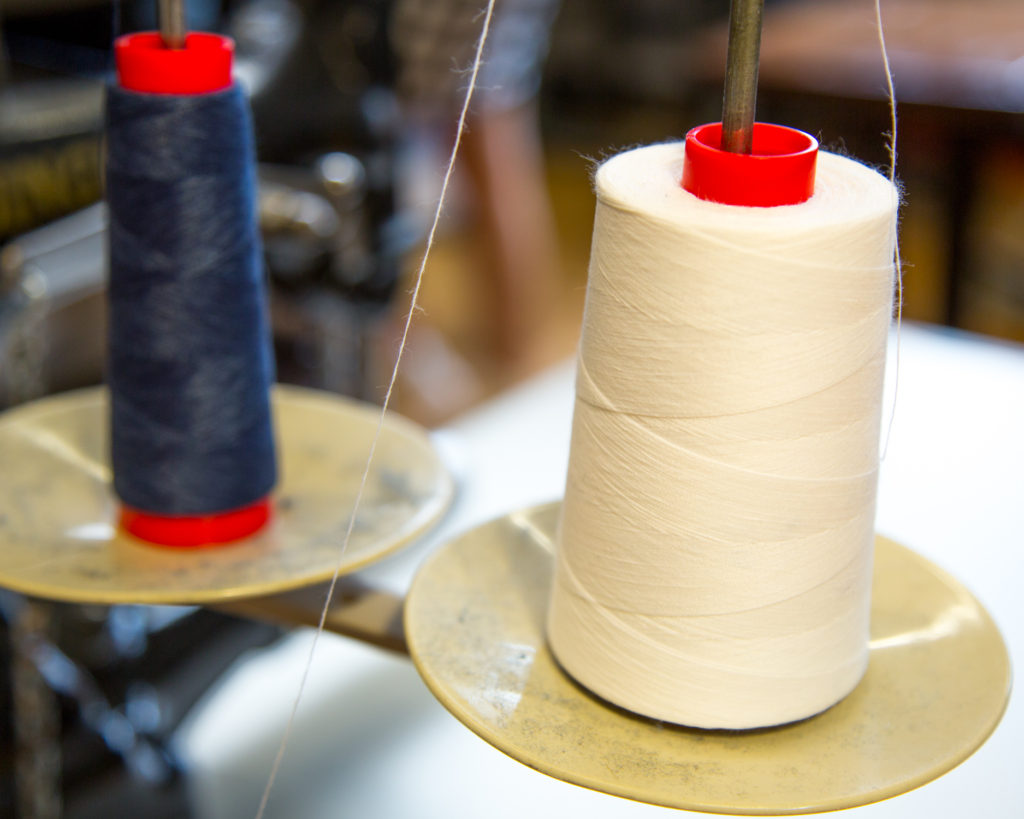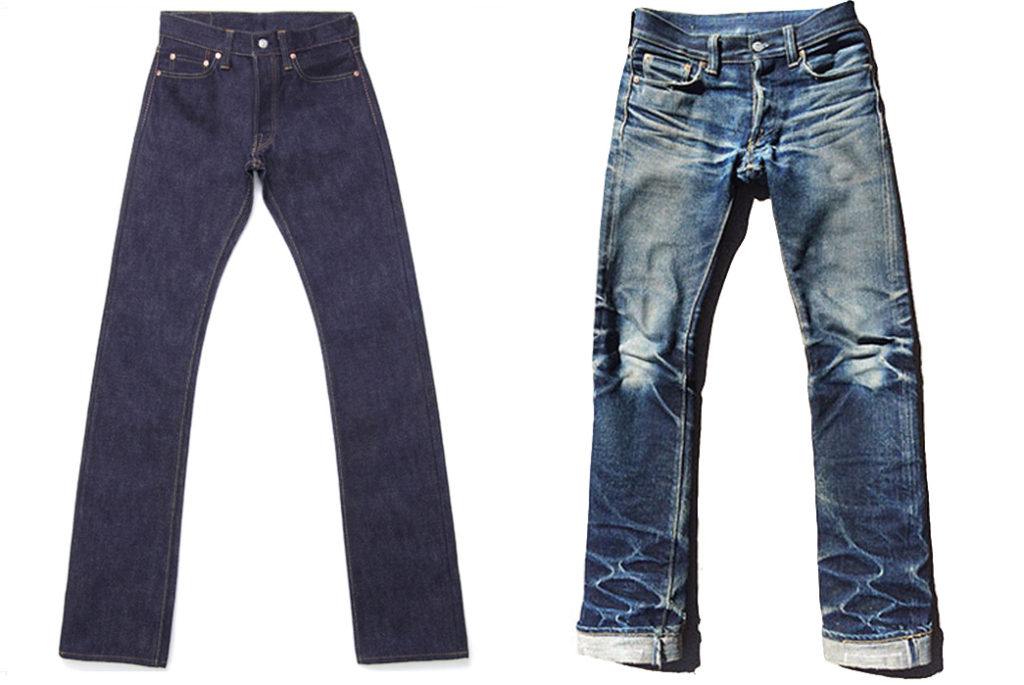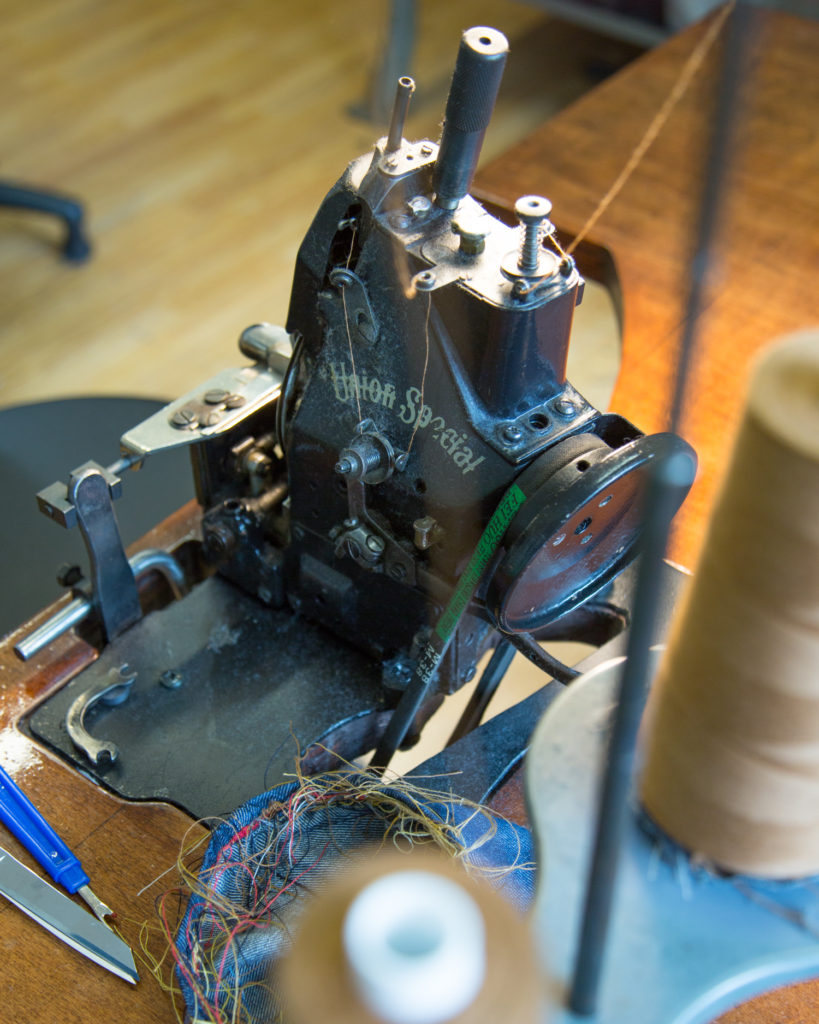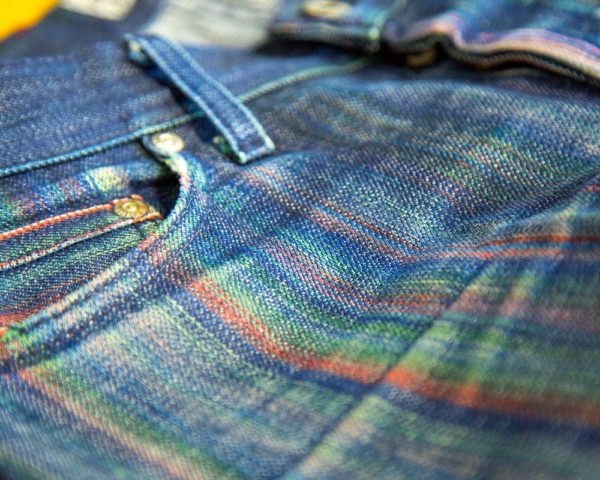Repair Reflections: PRF’s Sara Quinn wants a repairable wardrobe.
Whenever I pack to go on a wilderness video shoot, or for a bike tour, I find myself making up excuses to pack a pair of jeans. I don’t need them – they’re heavy and impractical for either type of adventure – but there’s something so comforting about jeans.
All kinds of clothing can carry this significance – an old sweater, a favorite t-shirt, a bandana. But jeans seem much more universal – everyone’s got that pair of jeans that fit just right, that are worn in in all the right places, that make them feel most themselves. As Rain Delise, owner of Indigo Proof Denim Repair, put it, there’s a particular kind of attachment to jeans “probably because people wear jeans everyday to just do normal things”.
Almost all denim comes to us pre-worn. No, not worn by someone else (unless you’re buying from a thrift store, of course), but worn-in by the manufacturer. Jeans go through a process called sanforization to shrink them up. They’re stonewashed, lasered, whiskered, sandblasted, acid washed, ozone faded. Jeans, even the ones without the fade marks and tears, go through many wash cycles, sometimes with chemicals or enzymes or stones. They’re mechanically sanded down and abraded until they have that perfect, worn-in-just-right look and feel. And all of this processing has an impact. Workers are exposed to harmful chemicals, water supplies are contaminated, and whole watersheds can turn blue from indigo runoff. Even if you think “oh no, I don’t buy those jeans with rips and fades, I get the regular ones” – you’re not immune. Your jeans have still gone through many of these processes. That is, unless you buy raw.
Raw Denim, or, Those Very Uncomfortable Jeans You Wish You Were Cool Enough to Own
Raw denim is denim that is woven on the loom, taken right off, sewn into jeans, then worn by whoever purchases them. Instead of going through all of those washes and sandings and whiskerings, they’re simply put on the shelf as-is.
Raw denim doesn’t take on its full meaning until it meets the final step in the process: being worn. We’re all familiar with these looks: a wallet fade on the back pocket, a tiny hole from keys popping through, a worn out seat from riding a bike. But because raw denim hasn’t been pre-worn-in, these fades are much more defined, and in turn define the genre. As you wear raw denim jeans, the indigo chips away on those spots you rub and shift often, revealing first a light blue, then eventually the white core of the cotton yarn. Those unique fades and wear marks come to define the garment, and mark memories in the process.

Denim is made up of indigo dyed warp (lengthwise) yarns and undyed weft (crosswise) yarns, making up the blue (but not perfectly blue) fabric that we all know and love.
History of raw denim
Raw denim isn’t new: this is how all jeans used to be up until the 1970s. In 1873 Jacob Davis and Levi Strauss submitted their first patent for “waist overalls” – a purely utilitarian garment designed to stand up to the abuse of working in the mines and fields. They were raw denim. As jeans became popularized, first through country westerns, then WWII factory work, then popular culture, everyday Americans began wearing the garment. But, like today, they wanted the look of the fades they saw on TV, but didn’t want to put in the hard work of wearing them in themselves. So, pre-washed, pre-broken-in jeans became a thing. A full history of raw denim is spelled out in this great Heddels piece.
Fades and memories
Robert Lim, a writer, dad, and customer of Indigo Proof Denim Repair, wrote about his experience wearing in his first pair of raw denim jeans: “Over time, I noticed an especially faded patch just below my left knee. Or, as I’d come to realize, exactly where my knee touches the rug next to our bathtub – formed by hundreds of times spent kneeling next to my son during our family evening ritual.”
Raw denim is loom state fabric, with solid, dark indigo weft. As you wear raw denim jeans and as you wash them ( a controversial subject that you can find many opinions on with a Google search), the wear marks become, as Rain Desile put it, “like a fingerprint.” In her denim repair business, she’ll get multiple pairs of jeans from one person with the same fade marks, requesting the same repair. Rain described a customer who “sent in six pairs [of jeans] and had a weird shaped wallet, so the same unique fade pattern was on the back pocket of all of them.”

Photo credit: Heddels. Raw denim jeans before being worn (left) and after being worn for over a year (right).
This is where raw denim feels like a protest to me. Fast fashion wants new clothing, fresh looks and definitely no wear marks (unless they were put there by the manufacturer). There’s something radical in the idea of fades, patches and repairs not just being acceptable flaws, but a desirable outcome. Memory is imprinted on our clothing.
As Lim reflected on his son’s childhood and his faded knee: “He turns four next month, and part of me is saddened by the understanding that he’ll only have a few memories of these handful of years. While my memories may also fade, this pair of jeans will always remind me of this time in both of our lives.”
We all just want to save the planet, but look good too
There are a lot of us looking for a way out of this fast-fashion, use-and-toss clothing culture. And we’re right to be seeking solutions. The impact of our clothing ranges from horrific field and factory conditions to micro-plastics infecting our oceans. The textile industry is second only to the oil and gas industry when it comes to pollution. It’s clear we need a different way forward. But I don’t want to toss out style all together. As long as we’ve been humans, clothing has been an important marker of culture, expression and identity. In her time-warping, gender-bending masterpiece Orlando, Virginia Woolf says of clothing: “Vain trifles as they seem, clothes have, they say, more important offices than to merely keep us warm. They change our view of the world and the world’s view of us.”
Is raw denim the solution? Of course not. But it hints at something real. Despite (and because of) the simplicity of the process and often of the final garment, raw denim pushes back against fast-fashion. Raw denim manufacturers tend to be small companies making limited lines of jeans. The people along the supply chain tend to be paid better. Because they don’t go through those numerous wash cycles with various mechanical and chemical abrading agents, they last longer. Also, they’re expensive. While this is an obvious barrier to many potential customers, it’s also a motivator for repair.

One of the many cool sewing machines at Indigo Proof Denim. The majority of Rain’s repair customers are raw denim owners.
Like most trends, raw denim risks losing some of its identity with popularity. Raw denim trends started mostly in Japan, where labor laws are strict and factory workers are paid well. But as raw denim gains in popularity, fast-fashion companies have started making their own, and there’s no guarantee that good working conditions follow the garment. There’s nothing inherently progressive about not pre-washing jeans before putting them on the shelves. It’s the culture and ethos of raw denim that have kept it radical.
There are lots of neat alternatives to our current textile industry: from used fashion sites like Poshmark and noisaf.bazaar and apps like ThredUp, to slow fashion trends and capsule wardrobes. I’ve been intrigued by the small Nashville-based women’s clothing company Elizabeth Suzann for a while now. They strive to make timeless designs and deeply research the materials and manufacture of their items to ensure longevity, all while paying decent wages. A good friend of mine is even experimenting with making textiles from milkweed.
Still, I worry that in our yearning to feel good about the purchases we make, we cling fast to trends that sell us on their do-good messaging. Adding a pair of raw denim jeans to my pants collection doesn’t somehow negate the purchases I’ve already made. But understanding what about it I find so compelling is a step toward the relationship I would like to have with my wardrobe and, really, with all of my possessions – intentional, meaningful, lasting.
Ultimately, I want clothes that are made to be worn, that look and feel good, that are functional, that have pockets, that can be repaired. I want clothes that are worth repairing. I haven’t invested in a pair of raw denim jeans just yet (and truthfully, there really aren’t that many exciting options for women), but it seems like raw denim ticks a lot of those boxes.
Want to learn more? Check out these cool resources, local and otherwise:
Indigo Proof Denim Repair – for all your denim repair needs
Vibrant Valley Farm – cool folks experimenting with growing indigo on Sauvie’s Island
Raw denim options, and a few for women, too
This film all about jeans
PRF’s “Repair Reflections” series offers contemplations, ideas, and story to generate thought and conversation around repair-related concepts in our everyday lives.
